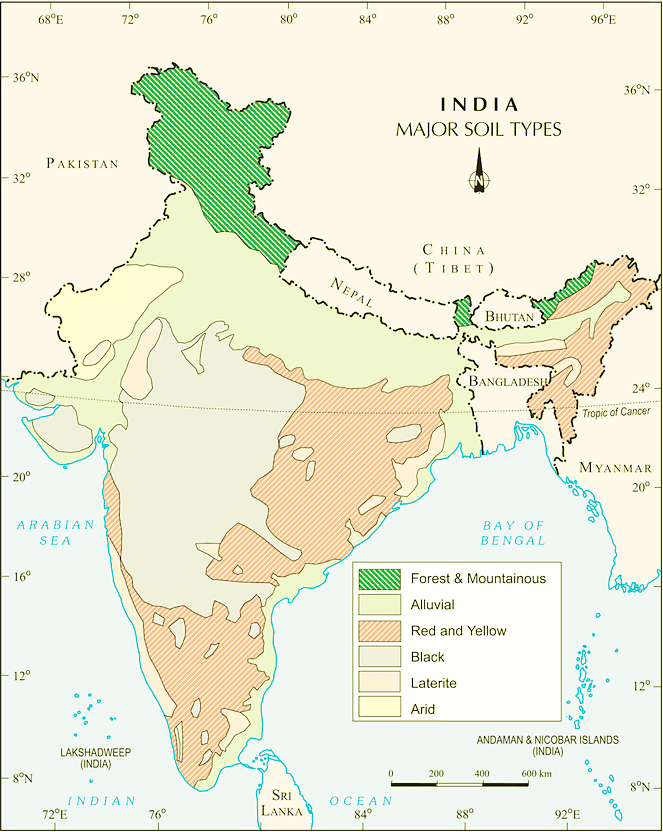Class 10 Exam > Class 10 Notes > Social Studies (SST) Class 10 > Map: Resources and Development
Map: Resources and Development | Social Studies (SST) Class 10 PDF Download
A soil map of India represents the distribution of different soil types across the country based on their formation, composition, and fertility. It helps in understanding which regions are suitable for various crops and land use planning.
The major types of soil found in India are:
- Alluvial Soil – Found in the Indo-Gangetic plains, it is fertile and ideal for agriculture.
- Black Soil – Also called Regur soil, it is rich in clay and retains moisture, making it good for cotton cultivation.
- Red and Yellow Soil – Found in Eastern and Southern India, it has iron content, giving it a reddish color.
- Laterite Soil – Formed in high rainfall areas due to intense leaching, used for plantation crops.
- Arid Soil – Found in Rajasthan and Gujarat, it is sandy and lacks moisture.
- Forest (Mountain) Soil – Found in hilly regions, it varies in composition based on altitude.

The document Map: Resources and Development | Social Studies (SST) Class 10 is a part of the Class 10 Course Social Studies (SST) Class 10.
All you need of Class 10 at this link: Class 10
|
66 videos|614 docs|79 tests
|
FAQs on Map: Resources and Development - Social Studies (SST) Class 10
| 1. What are the different types of resources mentioned in the Resources and Development chapter? |  |
Ans. The chapter discusses various types of resources, which can be classified into natural resources, human resources, and capital resources. Natural resources are further divided into renewable and non-renewable resources. Human resources refer to the skills and talents of people, while capital resources include financial and physical assets used in production.
| 2. How do human activities impact the availability of resources? |  |
Ans. Human activities, such as industrialization, urbanization, and deforestation, significantly impact resource availability. Over-exploitation of resources can lead to depletion, while pollution can degrade the quality of natural resources. Sustainable practices are essential to ensure that resources remain available for future generations.
| 3. What is the importance of sustainable development in resource management? |  |
Ans. Sustainable development is crucial as it aims to meet the needs of the present without compromising the ability of future generations to meet their own needs. It promotes the responsible use of resources, ensuring that economic growth does not come at the expense of environmental health or social equity.
| 4. Can you explain the role of technology in resource development? |  |
Ans. Technology plays a vital role in resource development by improving extraction processes, enhancing efficiency in resource use, and enabling the creation of alternative resources. Innovations in technology can help reduce waste, minimize environmental impact, and lead to the discovery of new resources.
| 5. What measures can be taken to conserve resources? |  |
Ans. To conserve resources, measures such as recycling, using renewable energy sources, promoting sustainable agriculture, and implementing strict regulations on resource extraction should be adopted. Public awareness campaigns and education on the importance of conservation can also encourage responsible resource use among individuals and communities.
Related Searches

















